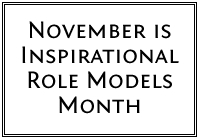Last week, during my seminar, Meet to Present, my client took me aside and pointed to one of the participants. "Do you know who he is?" she whispered.
"No, but he looks familiar," I said. "Who is he?"
"He played Mikey in the Life Cereal commercial," she revealed.
"I love that commercial!", I squealed. "Mikey was so cute".
If you're a baby boomer who grew up in the U.S., you saw the commercial about Life Cereal. Years later, people remember this commercial even though it's only 19 seconds in length. It first played in 1972 and was one of the longest, continuously running commercials. In 1999, TV Guide rated it as one of the top 10 commercials and in a survey 70% of adults could identify it.
So what does this commercial teach us about public speaking success and influence?
The message tells a story. There are no statistics, no lecturing. The audience watches two brothers reject the "healthy" cereal they think isn't good enough to eat. The brothers call in Mikey to be the guinea pig. To their surprise he likes it.
The message is simple and clear. This is a tasty cereal that's good for you. Yet nobody ever says that.
The messenger is memorable. The commercial ends with "Hey Mikey." People remember the last thing they hear and that's why to this day the audience remembers Mikey's name.
The message is replayed. It's not enough to speak once or twice. To make the message land, savvy speakers tell their signature stories. They present their message frequently to many audiences through different media.
Like television ads, a speech or presentation must tell a good story. The ad took 19 seconds to tell the story and sell the message.
How long does the average speaker take to give a presentation? What if you had only 19 seconds? How would you tell your story? Would it be memorable?
For a trip down memory lane, here is Mikey's Life cereal commercial:





 Have you ever wondered why some leaders are more inspirational than others? Here's the secret. They speak from the inside out. Where most leaders speak about the WHAT and the HOW, leaders who inspire audiences with their message do one thing differently. They speak about the WHY.
Have you ever wondered why some leaders are more inspirational than others? Here's the secret. They speak from the inside out. Where most leaders speak about the WHAT and the HOW, leaders who inspire audiences with their message do one thing differently. They speak about the WHY.




